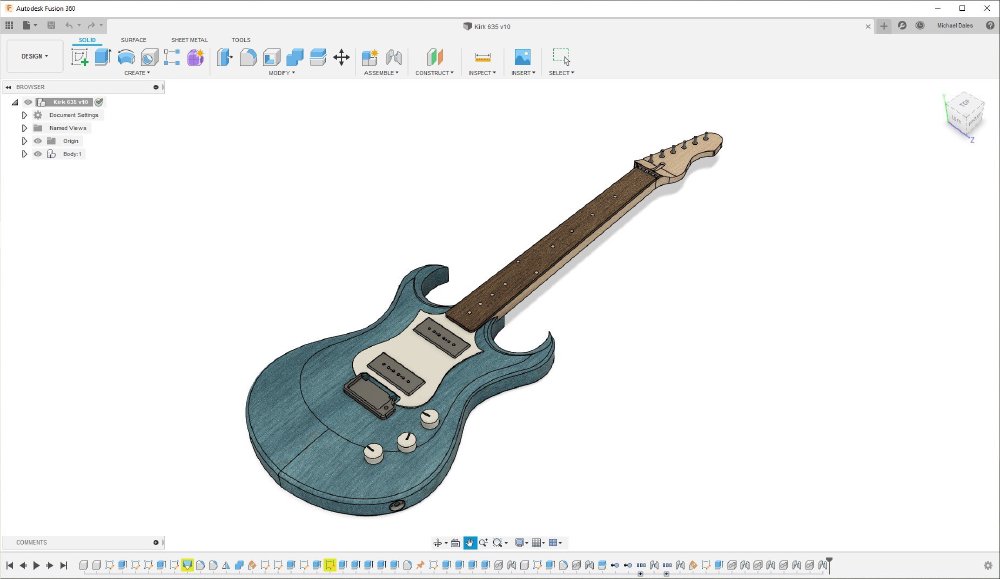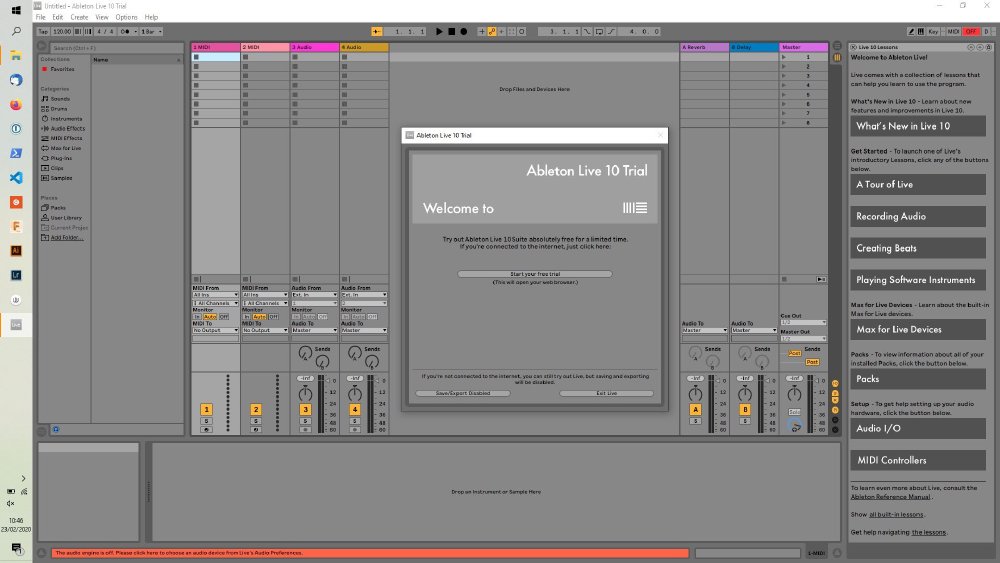A week out the shop
Published 23 Feb 2020
Tags: ableton live, CAD, design
I’ve not made any dust at all this last week, which feels a bit weird. My new workbench is still on order, and I got note from the supplier that it is now delayed a week (it seems Sjobergs are being held up outside the UK somewhere, as everywhere has them on back order). With luck it’ll turn up week after next now. Thus instead I’ve mostly been getting on with paid software contracting again this week to top up the bank account, but I did spend a little bit of time on the guitar front.
I’ve continued to do a little bit of design work again, trying to move this Kirk model further along:

By and large it probably doesn’t look that dissimilar to glimpse I gave of this design last week, but it’s now going through the detail refinement process. It’s very easy to design something in CAD that looks nice but can’t be manufactured, so I’m going through dotting the Is and crossing the Ts: how are parts going to screw down, just exactly where will the wiring for the pickups run, etc.
For the design here I’ve settled on a 25” scale length, that length sitting somewhere between the Fender and Gibson norms of 25.5” and 24.75” respectively, and also being what a bunch of PRS guitars use. As an interesting coincidence the neck length for a 21 fret 25.5” scale length guitar is the same as for a 22 fret 25” scale length guitar, which means I can re-use my existing neck templates, which is nice. This guitar is meant to be a demo guitar, so my hope is that by picking something in the middle it’ll be more relatable to the two biggest camps of players out there - a gamble, but we shall see. Decisions like this are not to be taken lightly, as they also have manufacturing impacts beyond what you might initially think - I had to check that slotted straight edge I use to check whether a fretted neck is straight would work with a 25” scale length, otherwise this could have been an expensive move (thankfully it the one I have does).
Originally I was going to use a 3 position switch pickup selector, but for now I’ve moved that to a rotary dial for a few reasons. Firstly, I like the 4 position rotary dial I’ve used on the last couple of guitars as a way of getting that extra series/parallel option in there. Secondly, it’s always way too easy to knock a switch vs accidentally rotate a dial, so with a dial you’re less likely to change pickup when you don’t want to. And finally, I just couldn’t visually find a place in this design where the switch looked good. I could have gone with the tiny switch nestled between the volume and tone control like PRS guitars often have, but I prefer my controls a bit more obvious. I suspect this is largely down to taste in the end, and if someone asks me to make one with a switch I happily would, but at this design stage I get to roll with what makes sense to me :)
There’s still a little way to go on this, and I suspect it’ll lose the wammy-bar bridge before its done: whilst nice, probably overkill for a demo guitar.
The other thing I did this week was look to see what I can use on my new non-Mac laptop to record guitar demos. In the past I’ve just used Apple’s GarageBand, and unfortunately there’s no equivalent that comes with Windows 10. I did play on Linux with some tools, and at some point I might go back to those, but they unfortunately all fit the Linux stereo type of needing a lot of effort investment up front rather than being a tool you can just use to get a job done.
Thus I’ve been back to Windows, where I’ve suggestions of both Ableton Live and Reaper being relatively affordable to get into for some simple recording and editing. Thus far I’ve got the Ableton demo and started playing with that, after which I’ll give the Reaper demo a spin:

If you’ve played with any PC audio software you like and think would be suitable for do simple guitar demos (layering a couple of guitar tracks and possibly adding some drums), then do let me know.